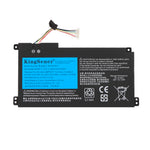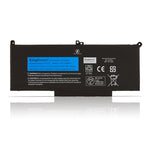You have no items in your shopping cart.
How do AED defibrillators work?

Perhaps we will always come across such news unintentionally on the Internet: a person suddenly experiencing a cardiac arrest at the airport or on the street, and ultimately losing their life due to the delay in receiving timely rescue.
This is not alarmist talk because no one knows when an accident will happen unexpectedly. But perhaps in an emergency, such as a sudden cardiac arrest, an automated external defibrillator (AED) could be our life-saving device.
So, what exactly is an AED? How does it work? How to use an AED correctly? In this article, we will help you understand this AED-related information.
1.Learn about AEDs
An Automated External Defibrillator (AED) is a portable first aid device designed to deliver an electric shock to the heart in the event of cardiac arrest. It's important to note that sudden cardiac arrest can occur when the heart's electrical system malfunctions, causing the heart to fibrillate or quiver instead of pumping effectively. At this time, the AED needs to play a role. It can help the patient's heart reestablish an effective heart rhythm, thus saving lives.
Currently, there are two main types of AEDs: automated external defibrillators (AEDs) and manual external defibrillators. In general, medical professionals and paramedics use manual external defibrillators more frequently. Automatic external defibrillators are commonly found in public places, such as workplaces, airports, subway stations, and other areas that are easily accessible to the public. These two types of AEDs have similar uses and functions. However, in comparison, AEDs are simpler to operate and more convenient for non-professionals to use.
2.How an AED works
Electric Shock
The heart is responsible for pumping blood throughout the body. The primary function of the AED is to deliver a high current to the heart quickly, in order to halt any irregular or uncoordinated electrical activity and restore a normal heart rhythm.
AED devices contain an internal battery and a high-capacity capacitor to store the energy required for defibrillation. After successfully activating the device, the AED delivers a high-energy shock (typically ranging from 200 to 360 joules) through two wires connected to adhesive electrode pads. Electrodes are placed at specific locations on the patient's chest to ensure the proper flow of electrical current throughout the heart.
Analyze heart rhythm
Before delivering an electric shock, the AED first senses the patient's heart rhythm to determine whether defibrillation is necessary. When the electrode pads are securely attached to the skin, the AED will automatically detect this and provide appropriate audio instructions while beginning to analyze and interpret the ECG.
If the analysis reveals a shockable rhythm, the AED prompts the user to deliver a shock.

Restore normal heart function
By delivering controlled electrical shocks to the heart muscle, an AED can depolarize cells and disrupt chaotic electrical activity, effectively resetting the heart's natural pacemaker. It is important to note that AEDs should only be used in individuals with ventricular fibrillation or pulseless ventricular tachycardia. Other cardiac rhythms, such as sinus rhythm, supraventricular tachycardia, premature ventricular contractions, or atrial fibrillation, do not require defibrillation.

M5070A Replacement Defibrillator Batteries For Home Defibrillator M5066A M5068A 110300 M5067A CR123 3V Battery Cell
3.How to use an AED correctly
Preparation and Setup
Before using the AED, we need to complete some preparations. The first step is to connect the power source, either by pressing the power button or opening the lid (for newer models), in order to activate the device. The AED then provides voice prompts and visual instructions to guide the user through the process. We must carefully follow these tips to ensure the proper use of the equipment.
Pasted electrodes
Electrodes need to be attached to the exposed skin. Before applying the pads, open the patient's clothing to expose the chest. This will ensure proper pad-to-skin contact.
Generally speaking, the electrode pads are placed on the upper right side of the chest (below the clavicle) and the lower left side of the chest (5-8 cm below the armpit, diagonally below the nipple). Proper placement of the electrode pads plays an important role in effectively delivering the shock.
Analyze heart rhythm and deliver shocks
The electrode pads are positioned correctly, and the AED will automatically analyze the heart rhythm to determine if an electric shock is necessary. If a shock is required, the AED prompts the user to ensure that no one is in contact with the patient and instructs them to keep others away from the patient.
After delivering the shock, the AED will continue to provide additional instructions for further action. Following the instructions of the AED step by step can ensure the smooth progress of the rescue operation.
An AED is an important life-saving device in the event of a sudden cardiac arrest. Understanding the knowledge related to AED may help you and others at some point in the future.
Finally, if you want to learn more about batteries, please visit:BatteryMall.com/support.
If you need more information about batteries related to medical products, please go to: batterymall.com medical-battery








